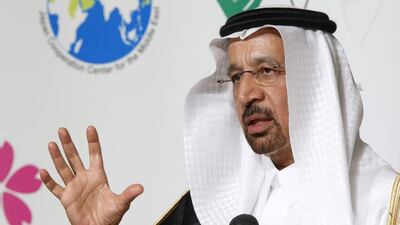After a period of strength and stability over the summer months, global equity markets have started to show signs of weakness, with investor focus moving to potential US monetary tightening. The equity markets had been supported by better than expected corporate earnings and stable liquidity conditions on account of the accommodative policies of central banks.
In our view, equity valuations are becoming stretched in context of the global growth outlook. In regional markets, the S&P Pan Arab Large Mid Cap Index was flat last month.
Oil prices remain volatile because of concerns about inventory and the rising US rig count. Prices recovered to US$50 per barrel last month after the Saudi energy minister Khalid Al Falih indicated that Saudi Arabia will work with other oil producers to stabilise oil prices, possibly through a freeze in production.
We have been here before and are already witnessing a retracement of oil prices to $47 in September, but hope that the outcome of an informal meeting on the sidelines of the International Energy Forum in Algeria from September 26 to 28 does not disappoint.
In Saudi, liquidity in the banking system remains tight with the loans to deposit ratio of many banks close to the regulatory limit of 90 per cent; the country’s three month interbank rate has risen to 2.3 per cent as against 1.5 per cent levels at the end of 2015. Even as the government continues to draw down on foreign reserves to support the economy, non-oil imports and consumer spending trends continue to weaken.
We see Saudi’s sovereign bond issuance planned for October as a beginning of series of issuances; government-related entities could follow. In the near term we expect the Saudi market to experience headwinds from poor economic data. Our overweight positions are geared to beneficiaries of the National Transformation Plan, a long-term call.
The catalyst in the Qatari market has been its scheduled inclusion in the FTSE’s Secondary Emerging Markets Index in the September 2016 review. The market was subject to a strong run-up towards the event but now appears rich in terms of valuation. There are 21 Qatari companies that are likely to be added to the index, which would result in passive inflows of about $400 million.
Egypt is seeking a loan of $12 billion from the IMF over a period of three years and also wants to borrow $3bn from international markets. We believe this to be a positive development for Egypt as a shortage of foreign exchange has hampered growth prospectus and fuelled inflation. Recent moves to raise household energy prices and the potential introduction of VAT would exert further upward pressure on inflation. The Egyptian currency may further devalue by 20 to 30 per cent once it is allowed to float. With a number of macro uncertainties being prevalent we remain cautious on Egypt in the near term.
We remain positive on the UAE market. Dubai’s relatively diversified economic base offers resilience as the bourse benefits from strong emerging markets funds flow.
In summary, with limited domestic catalysts and acknowledged fundamental challenges, regional markets will be highly geared to global news flow and oil price movements for the remainder of 2016.
Saleem Khokhar is the head of fund management at the National Bank of Abu Dhabi.
business@thenational.ae
Follow The National's Business section on Twitter

